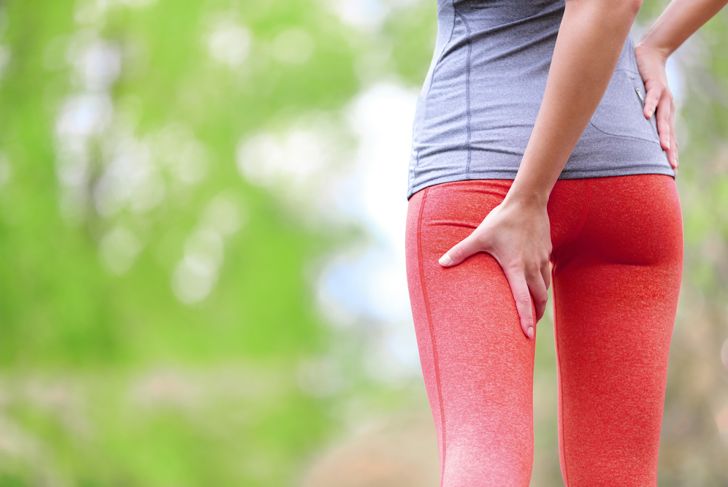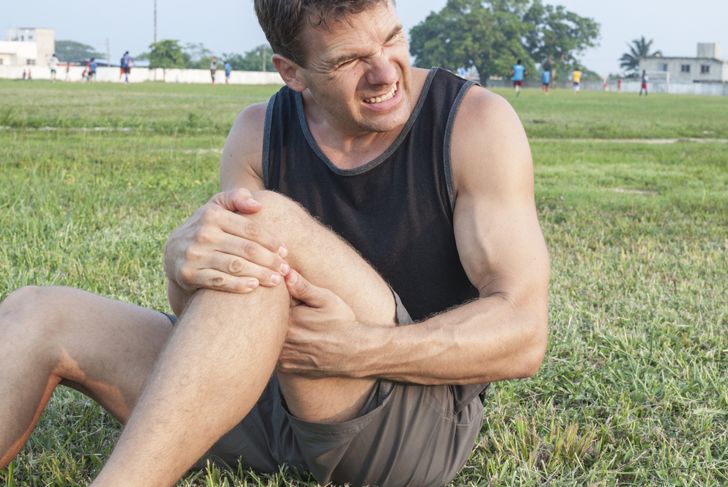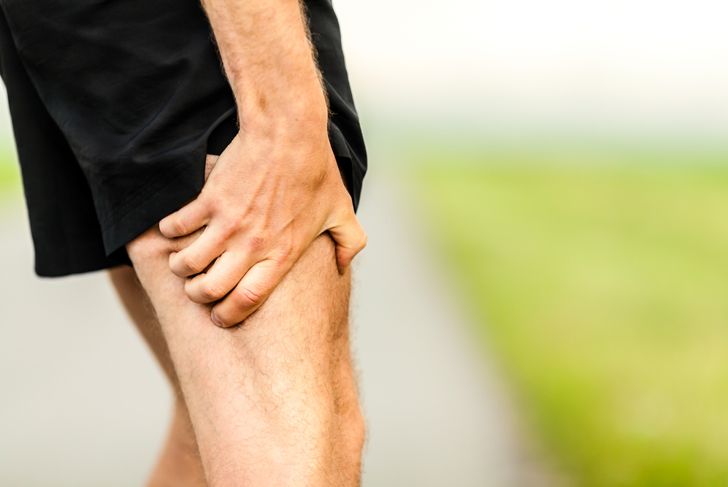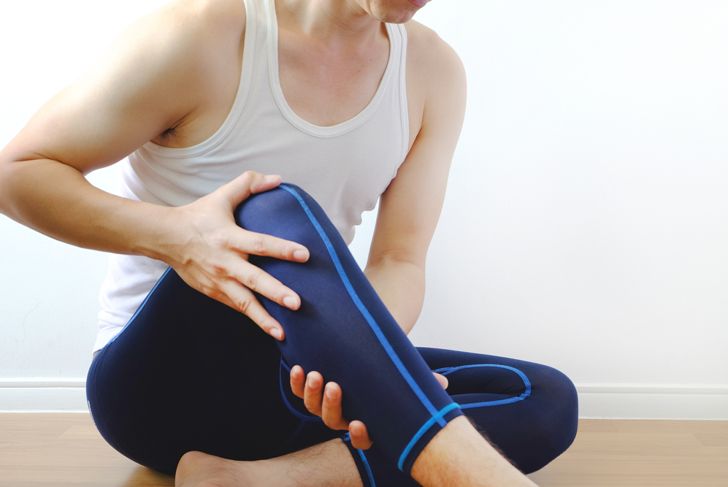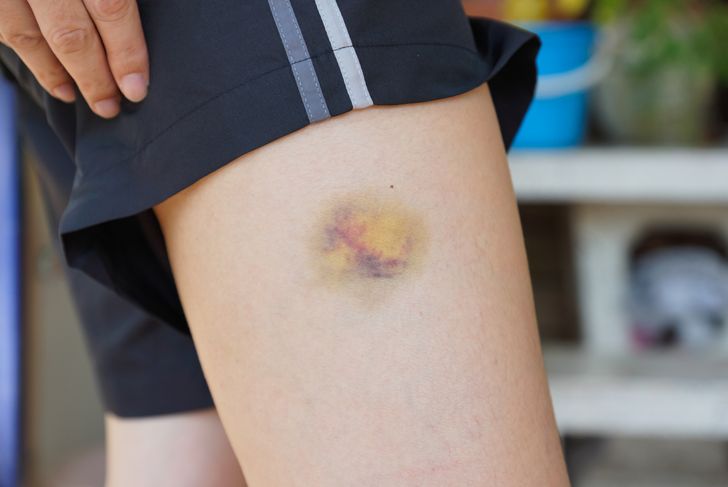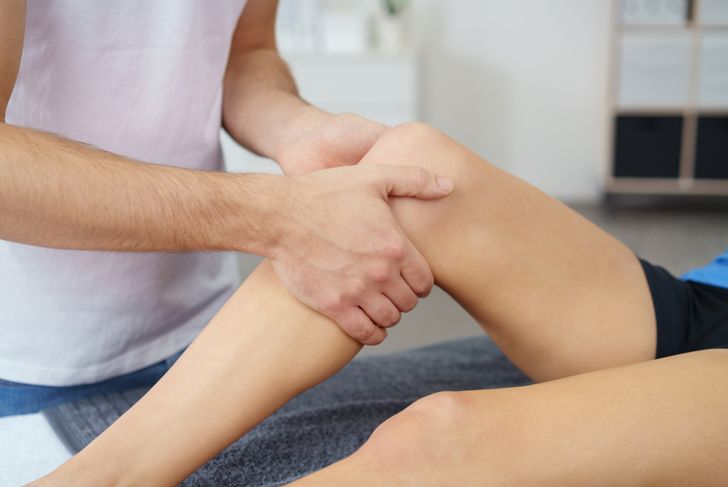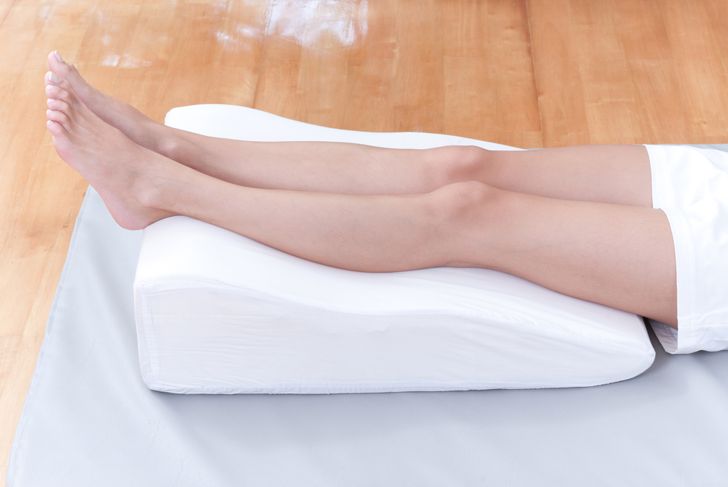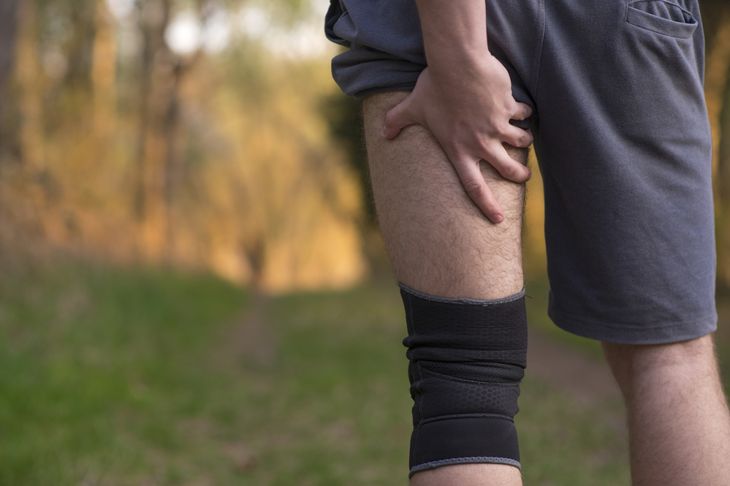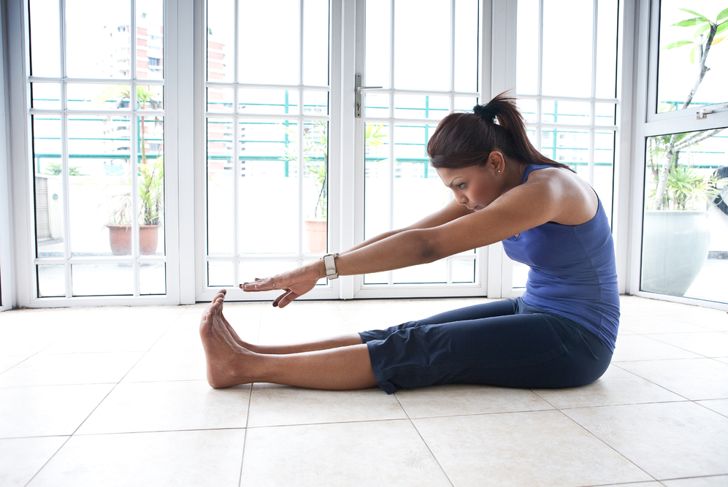Hamstring strains can occur during any strenuous exercise, as well as from overuse, and they are very painful injuries. A hamstring is a group of muscles that runs down the back of the upper leg and helps you to bend your knees. Hamstring strains occur when these muscles tear, which can occur suddenly or gradually during the course of an activity. Properly warming up can help prevent hamstring injuries, but they are still very common, especially among athletes. It is important to know the symptoms of hamstring strains, as well as how to treat them if they do occur.
Tearing Sensation
If your hamstring strain occurs suddenly, you may feel a tearing sensation. This occurs when the muscle fibers tear and may be accompanied by intense pain. If this happens, you should immediately stop whatever you are doing. Continuing to move despite the pain can further damage the muscle, and may lead to more serious complications that could require surgery to fix instead of simple treatments. You may also feel other similar sensations, like popping or snapping, depending on the severity of your injury. If your injury is severe, you should seek medical treatment to make sure it is just a strain.
Leg Pain
After you strain your hamstring, you may experience leg pain until the injury has healed. This pain typically occurs in the back of your upper leg, as well as the lower part of the buttock where the hamstring is attached. The pain may get worse when using the muscle while walking, bending, or straightening the leg. A common complaint of people who have hamstring strains is that it is difficult to get out of bed, stand up, or sit down. This may make it difficult to go about your normal daily activities. Getting proper treatment can help to shorten the duration of the pain.
Stiffness
In addition to pain interfering with daily activities, stiffness may make it difficult to go about your routine as well. After a hamstring strain, your muscles will likely feel tense and hard to use. Even necessary activities, like getting out of bed or using the bathroom, may be challenging to do while suffering from a hamstring strain. Because it is so difficult to stand and sit, you may need to rely on your upper body to do most of the work. Anti-inflammatory medicines can relieve some of the stiffness, but whenever possible, you should still avoid activities that require you to bend your legs.
Swelling
Swelling is a very common symptom of hamstring strains. It may not happen immediately, but within a few hours of the injury, you may notice inflammation and tenderness. If this happens, try to stay off of your injured leg and use anti-inflammatory treatments to reduce the swelling. Most of the pain that you feel in your leg is related to this inflammation, but NSAIDs can help to decrease these symptoms. Other common treatments, like ice and elevating the injured leg, can also be beneficial. If your swelling does not decrease after a few days, you should see a physician to make sure your symptoms are not caused by something else.
Bruising
Although bruising is not a common symptom, it may occur in some instances of hamstring strains. Bruising happens when blood vessels near the surface of the skin rupture, causing the black and blue discoloration that we associate with bruises. This is typically not a serious condition, but it can be painful to the touch. When you tear your hamstring muscles, you can cause these blood vessels to burst and create a visible bruise. If you experience bruising, NSAIDs and ice are the best remedies to relieve tenderness. Try to avoid wearing clothing that might aggravate the bruise and cause additional pain.
Inability to Bear Weight
If you have a mild hamstring injury, you may be able to walk despite the pain. In more severe cases, however, the muscles are so damaged that it is nearly impossible to put weight on the injured leg. The hamstring may feel weak, as though it will give out if you try to put too much pressure on it. You also may experience extreme pain whenever you move your leg. If these symptoms occur, you should immediately stop using your leg and rest instead. It is a good idea to interpret pain and weakness as a sign that you should stop what you are doing immediately.
Rest
The most important thing that you can do for your hamstring strain is to rest your leg. If your injury is severe, you might not be able to move, but even if it is only a mild strain, rest is your best option. You may need to use assistive devices like crutches or a walker until your hamstring strain has healed. This will keep pressure off of the injured leg. You should also make sure to elevate your leg whenever you are resting, in order to facilitate healing. Bending your legs is likely to be a painful activity, so you may find it difficult to stand up during your recovery.
Compression
While it may seem counterintuitive, compression is actually one of the best treatments for your hamstring strain. Use an athletic wrap or bandage to wrap your thigh, applying pressure to the injury. This compression will help to reduce swelling and pain and will speed recovery time. When using compression, make sure that the bandage is the appropriate degree of tightness. If it is too loose, it will not have the desired effect, but if it is too tight, you could do permanent damage to the blood flow in your leg. A physician can advise you about the best way to use compression on your injury.
Anti-inflammatories
NSAIDs reduce swelling and pain, which can help you to manage your injury. You should be careful to follow the directions printed on your medication package, as taking NSAIDs for too long can have dangerous side effects. Ice should also be applied to hamstring strains, especially immediately after the injury occurs. This will help to decrease swelling right away and may prevent a more severe injury. Because the pain is directly related to inflammation, using these techniques should make your recovery much easier.
Exercise
Hamstring strains typically occur in patients who fail to properly stretch before exercising, or who lack conditioning in their other muscles, causing the hamstring to overload. After your hamstring is healed, your doctor will likely recommend a series of stretches that can help to strengthen the muscle and prevent future occurrences. There are also strengthening exercises that can help you recover from your injury if done properly. You should talk to your physician about whether physical therapy or at-home stretching could be beneficial to your rehab process. Your doctor can provide you with exercises that are appropriate based on the severity of your strain.

 Home
Home Health
Health Diet & Nutrition
Diet & Nutrition Living Well
Living Well More
More